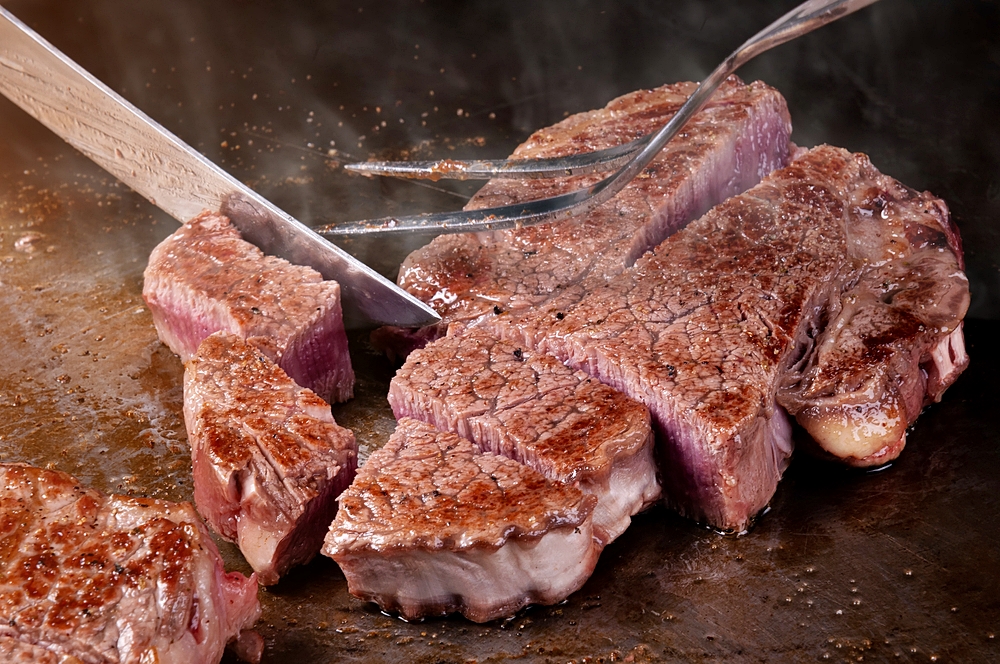Eating lighter and healthier is not difficult. Twelve tips for shopping and preparation that will keep fat on your plate to a minimum.
From time to time it pops up, the resolution to eat healthier and save calories. This is not difficult at all, and you don’t have to forego enjoyment. With a few simple tricks you can save fat and cook with little fat without the food tasting bland. Twelve tips.
1. Flesh
Always cut off any visible fat before the meat is in the pan. Alternative: buy lean cuts of meat right away.
2. Poultry
It’s not difficult to see that most of the fat is under the skin. Either grill the poultry so that the fat can drip out. Or remove the skin and cut away any visible fat before cooking in the pan and oven.
3. Hack
You can see it well from outside: The lighter the mince, the higher the fat content. Pork fat has 35 grams of fat per 100 grams, beef mince (tartar) only 6 grams.
4. Breadcrumb coating
Better not do that. Do not bread the schnitzel or fried fish, as the egg and breadcrumbs will soak up fat. Compromise: breading only one side.
5. Ham
When it comes to ham, it’s relatively simple: you can see right away when you shop whether it contains a lot or little fat. However, extremely lean ham often doesn’t taste that mild. But here you can easily control it with the amount, because ham just sliced very thinly tastes very good – also with asparagus, by the way. Varieties such as Parma ham or Serrano ham have such an intense taste that they shouldn’t be sliced thick at all. A thin slice of Parma ham weighs around 10 grams, a normal slice 25 grams.
6. Milk
It is best to take the reduced-fat variant, the one with 1.5 percent fat. Compared to whole milk, one liter makes up 20 grams of fat, i.e. around 200 kilocalories. It’s worth it, especially if you drink a lot of latte macchiato and cappuccino. Incidentally, skimmed milk does not have to be, switching from whole milk would then be too extreme.
7. Dairy products
For soups and sauces use sour cream instead of crème fraîche. For 100 grams, this means 10 instead of 28 grams of fat. There is also savings potential for cheese: many varieties taste excellent even with 30% fat in dry matter. At the top of the list is sour milk cheese (Harzer, basket cheese) – a spicy taste with only 10 % fat in dry matter.
8. Tomatoes
Our favorite vegetable is the perfect slimming product. This also applies to canned tomatoes, juice and tomato paste from the tube. A 50-gram tomato has just 10 kilocalories. So: eat lots of tomatoes and tomato sauce, also tomato soup (without adding cream). Dried tomatoes provide a great aroma in salads and risotto. You can also save fat here if you use tomatoes that are not pickled in oil.
9. Fruit and vegetables
Except for avocado, which is a fruit, fruit and vegetables have almost no fat. That makes them predestined to mix properly on the plate. Wherever possible: “Dilute” sandwiches, salads, soups and hot dishes with plenty of vegetables. And eat a portion of raw vegetables in between – thanks to the large amount of water that is built in, it really fills your stomach.
10. Salad dressings
If you want to save oil: use natural yoghurt, sour cream, mustard, herbs, spices and, to stir smoothly, buttermilk, lemon juice or mineral water. And with the blender you can simply puree a piece of cucumber or a couple of tomatoes. That makes the sauce fresh and fruity.
11. Olive oil
Fine oil works like a spice and comes only at the end with food. It is best portioned with a spoon, the shot from the bottle can easily get too lush. 1 tablespoon of oil has 12 grams of fat and provides 108 kilocalories. Also ideal: oil from the spray bottle – can be bought ready-made.
12. Fry fish and meat
You can fry without any fat in a good coated pan or, even better, in a pan on a piece of baking paper. Meat or fish turn brown, stay aromatic and juicy. The frying juice that escapes collects on the paper. If herbs (e.g. thyme) or garlic are cooked, it becomes even more aromatic. The best thing to do is to collect the juice and spread it over the fish or meat as a small sauce.

